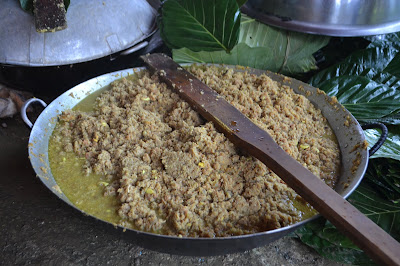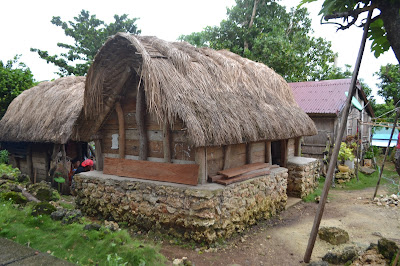Itbayat, Batanes' Bayanihan Culture through Vunung
Possibly, it is safe to say, that we all learned about the term “bayanihan” through one of our thick elementary history textbooks wherein the word will always be depicted by an image of a “bahay kubo” carried by a group of lean tan-skinned men—usually sporting a camisa de chino, tucked loosely with their faded maong pants folded above their knees while wearing their straw hats—kept in queue at both ends of the nipa hut by two parallel sturdy long bamboo sticks lugged on their broad shoulders.
For some it may seem as a Herculean task transporting a full house under a sunny afternoon while walking barefoot on uneven soil terrains. And you just can’t help but wonder how these guys are still able to flash those happy smiles amid such tough duty. Perhaps, those genuine grins are a reflection of how they feel inside: the pleasure you achieve when you lend a hand.
In a nutshell, “bayanihan” is a concept of assisting your neighbor in an altruistic sense. Literally, it translates into English as an act of heroism. In the Philippines, the said culture is more commonly observed in the rural areas and not so much in the metro.
I must say, I have been to a few scenic spots in the Philippines as far as the luscious boondocks of the cordilleras to the pristine beaches of Palawan or as distant as the historic sites in Cebu to the charming peninsula of Zamboanga. But never in my life I had witness and understand the true spirit of “bayanihan” when I was stranded at the northernmost island of the country: Itbayat, Batanes.
Separated from the mainland Luzon, Itbayat triumphed to preserve a Filipino norm that gradually diminishes as modern times thrive. The “bayanihan” culture in the area typically emanates in their day to day lives. This was truly realized with what Itabayanons coined as their unity meal: Vunung.
People from Itbayat are serving vunung during different occasions such as birthdays, anniversaries, town feasts, and even during pasyam. More than a community feast, vunung is a celebration of a village’s solidarity.
So here how it goes. Everyone from the community regardless of their gender, social status, or age play a key role: no task is considered menial.
Shallow streets are closed to install retractable tents that will serve as a shade to the makeshift kitchen.
Ginormous cauldrons and casseroles are piled atop burning woods. According from the locales, the kitchen utensils as well as the “banyeras” (big tubs) were borrowed from the municipal government. This has been a practice of the community in these occasions.
Also, some generous people shells out some pennies to purchase ingredients for the community meal.
Folks that are in-charge with the community kitchen are enduring the warm temperature and smoke billowing around the area.
While cooking traditional Itabayanon dishes, some are cleansing the kabaya leaf. This will serve as a wrap and will hold the meal which usually include rice and meat.
So here’s an entertaining scene, people lines up parallel with the banyeras. While seated side-by-side they will pass on the kabaya leaf and carefully put on each food item until it reaches the last tub.
Almost done, each leaf will then be tied and stacked in to banyeras for the distribution.
And after all the hardwork, voila, the whole community will queue to have their meal. Take note that the Island of Itbayat only has 5 barangays and everyone in the island is invited to dig in during this feast.
Describing the whole process may seem short but I tell you, the whole community wakes-up before dawn to prepare for the big feast.
I guess, a lot of people will agree with me, eating has never been better if its free.












Comments
Post a Comment